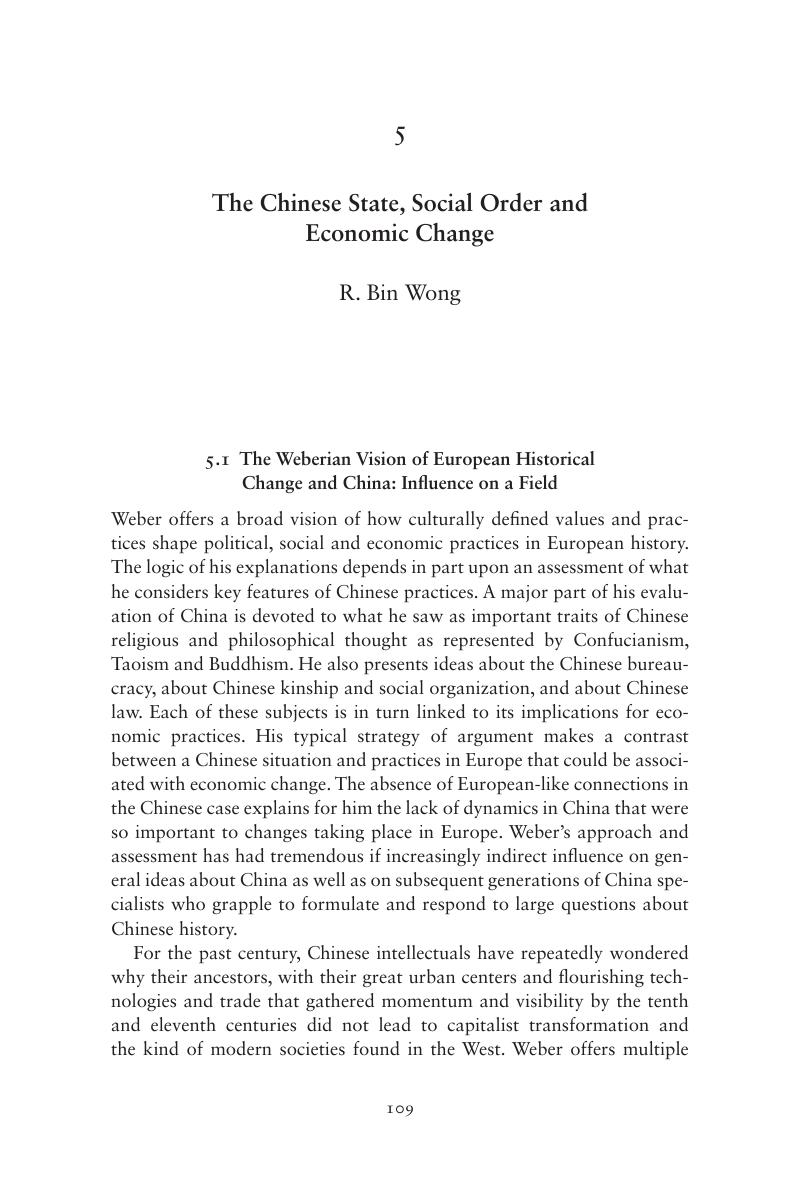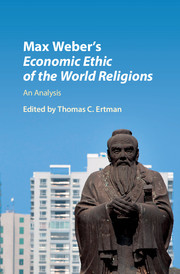Book contents
- Max Weber’s Economic Ethic of the World Religions
- Max Weber’s Economic Ethic of the World Religions
- Copyright page
- Contents
- Contributors
- Acknowledgments
- Abbreviations of Weber’s Works
- Part I Introduction
- Part II Weber’s The Economic Ethic of the World Religions in the Context of his Overall Intellectual Project
- Part III Reassessing Weber on China
- 4 Weber’s Religion of China
- 5 The Chinese State, Social Order and Economic Change
- 6 Max Weber and Patterns of Chinese History
- Part IV Reassessing Max Weber on India
- Part V Reassessing Max Weber on Ancient Israel
- Part VI Conclusion
- Index
- References
5 - The Chinese State, Social Order and Economic Change
from Part III - Reassessing Weber on China
Published online by Cambridge University Press: 28 April 2017
- Max Weber’s Economic Ethic of the World Religions
- Max Weber’s Economic Ethic of the World Religions
- Copyright page
- Contents
- Contributors
- Acknowledgments
- Abbreviations of Weber’s Works
- Part I Introduction
- Part II Weber’s The Economic Ethic of the World Religions in the Context of his Overall Intellectual Project
- Part III Reassessing Weber on China
- 4 Weber’s Religion of China
- 5 The Chinese State, Social Order and Economic Change
- 6 Max Weber and Patterns of Chinese History
- Part IV Reassessing Max Weber on India
- Part V Reassessing Max Weber on Ancient Israel
- Part VI Conclusion
- Index
- References
Summary

- Type
- Chapter
- Information
- Max Weber's Economic Ethic of the World ReligionsAn Analysis, pp. 109 - 136Publisher: Cambridge University PressPrint publication year: 2017

